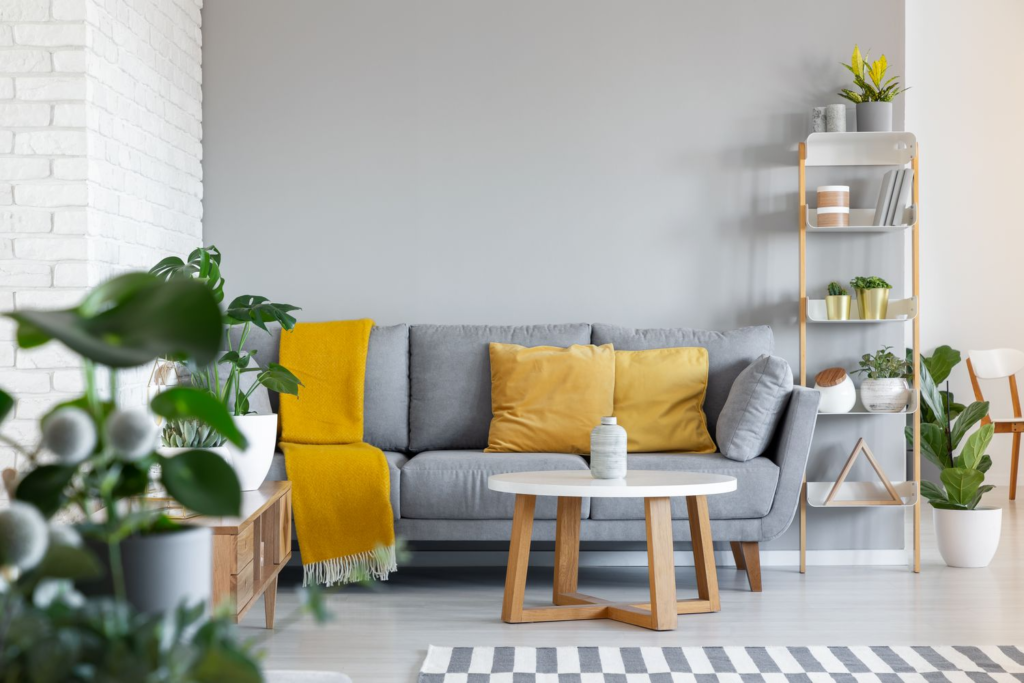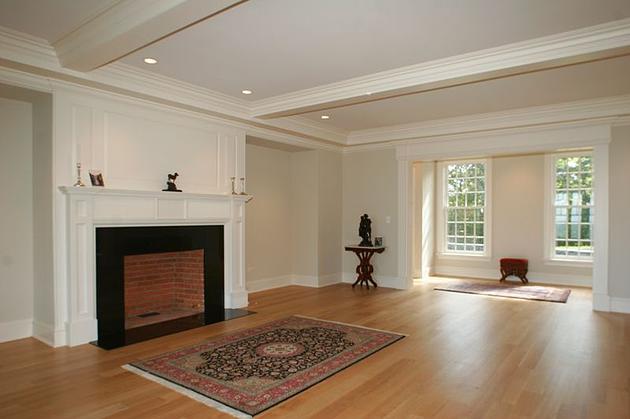When it comes to interior design, accent wall colors play a crucial role in creating a visually appealing and harmonious space. The right choice of accent wall colors can transform a room from dull to vibrant, from ordinary to extraordinary. By strategically selecting colors that complement your existing decor and personal style, you can elevate the overall ambiance and aesthetics of your living space. In this article, we will explore the key factors to consider when choosing the perfect accent wall colors, helping you make informed decisions that will enhance the beauty of your home.
Table of Contents
- Assessing Your Space and Existing Decor
- Embracing Color Psychology
- Harmonizing with the Color Wheel
- Considering the Lighting Conditions
- Incorporating Color Samples and Swatches
- Considering the Mood and Purpose of the Room
- Exploring Unique Color Combinations
- Seeking Inspiration from Design Resources
- Testing and Finalizing Your Accent Wall Colors
- Conclusion
Assessing Your Space and Existing Decor

Before diving into the world of accent wall colors, it is essential to assess your space and take stock of your existing decor. Consider the size of the room, the amount of natural light it receives, and the overall style and theme you have established. Take note of any prominent features or architectural elements that you want to highlight or downplay. By understanding the current state of your space, you can choose accent wall colors that will harmonize with your decor, rather than clash with it. This initial assessment will serve as a foundation for selecting the perfect accent wall colors that will complement your home’s unique characteristics.
Embracing Color Psychology
Color psychology is a fascinating field that explores the impact of different colors on our emotions, mood, and overall well-being. When choosing accent wall colors, it is crucial to consider the psychological effects they can have on you and your guests. For instance, warm colors like red, orange, and yellow are known to stimulate energy and creativity, making them ideal for spaces where you want to foster lively conversations or productivity. On the other hand, cool colors such as blue and green promote calmness and relaxation, making them suitable for bedrooms or areas dedicated to unwinding. Understanding color psychology can help you create a harmonious and purposeful atmosphere within your home.
Harmonizing with the Color Wheel

The color wheel is a powerful tool that can guide your decision-making process when it comes to accent wall colors. It consists of primary, secondary, and tertiary colors arranged in a circular format. By understanding the relationships between these colors, you can create harmonious color schemes for your accent walls. One popular technique is to choose complementary colors, which are located directly opposite each other on the color wheel.
Complementary color combinations, such as blue and orange or red and green, create a striking visual contrast. Analogous colors, which are adjacent to each other on the wheel, offer a more harmonious and serene effect. Experimenting with different color combinations from the color wheel can help you discover the perfect accent wall colors for your space.
Considering the Lighting Conditions
Lighting plays a crucial role in how colors appear within a room. Natural light, as well as artificial lighting sources, can significantly affect the perception and intensity of accent wall colors. Before making a final decision, observe how the lighting conditions change throughout the day and in different seasons. Consider whether your room receives ample natural light or if it tends to be on the darker side.
For rooms with limited natural light, lighter and brighter accent wall colors can help create an illusion of spaciousness and add a welcoming atmosphere. On the other hand, rooms with abundant natural light can handle darker and more saturated colors without feeling overwhelming. Adapting your accent wall colors to the lighting conditions will ensure that your chosen hues shine to their full potential.
Incorporating Color Samples and Swatches

Seeing colors on a digital screen or in paint cans at the store may not always accurately represent how they will appear on your walls. To avoid any surprises, it’s recommended to obtain color samples or swatches from your chosen paint supplier. These samples can be applied directly to your walls, allowing you to see how the colors interact with the existing lighting and decor in your space.
By observing the samples under different lighting conditions and at various times of the day, you can get a better sense of how the colors will look in your room. Additionally, it’s advisable to test multiple colors side by side to compare and contrast their impact. This hands-on approach will give you a clearer understanding of how the accent wall colors will complement your overall design scheme.
Considering the Mood and Purpose of the Room
The mood and purpose of the room should also play a significant role in selecting the perfect accent wall colors. Different rooms serve different functions and evoke varying emotions. For instance, a home office may benefit from colors that promote focus and concentration, such as shades of blue or green.
In contrast, a dining room might benefit from warm and inviting colors, like earth tones or deep reds, to create a cozy and welcoming atmosphere. Consider the activities that will take place in the room and the emotions you want to evoke. By aligning the accent wall colors with the intended mood and purpose, you can create a space that not only looks aesthetically pleasing but also supports its function.
Exploring Unique Color Combinations
While it’s important to consider tried-and-true color combinations, don’t be afraid to explore unique and unexpected pairings for your accent walls. Sometimes, a daring and unconventional color combination can breathe new life into a room and make a powerful design statement. Look for inspiration in art, nature, fashion, or even travel destinations.
Consider incorporating complementary colors with a twist, using analogous colors with a pop of contrast, or experimenting with monochromatic shades in different intensities. By thinking outside the box and embracing your creativity, you can discover captivating accent wall color combinations that reflect your personal style and make your space truly unique.
Seeking Inspiration from Design Resources
If you’re feeling overwhelmed or unsure about which accent wall colors to choose, there are numerous design resources available to provide inspiration and guidance. Interior design magazines, websites, and social media platforms are treasure troves of ideas, showcasing real-life examples of stunning accent wall color schemes. Create a mood board or a digital collection of images that resonate with you.
Pay attention to the colors used in these spaces and how they harmonize with the overall design. You can also seek advice from professional interior designers who can offer expert insights tailored to your specific needs and preferences. By immersing yourself in design resources, you’ll gain valuable inspiration and confidence in making the perfect accent wall color choices.
Testing and Finalizing Your Accent Wall Colors
After conducting thorough research, considering all the essential factors, and exploring various options, it’s time to test and finalize your accent wall colors. Take the samples or swatches you obtained and paint small sections of your walls to see how the colors interact with the room’s lighting, decor, and overall ambiance. Observe the colors during different times of the day and evaluate how they make you feel.
Involve your family members or friends in the decision-making process, as their input can provide fresh perspectives. Once you’re confident in your choices, proceed with painting the full accent walls. The final result will be a space that reflects your style, enhances the overall design, and brings a renewed sense of energy and beauty to your home.
Conclusion
Choosing the perfect accent wall colors requires careful consideration of various factors, including your existing decor, color psychology, the color wheel, lighting conditions, and the mood and purpose of the room. By assessing your space and understanding its unique characteristics, you can select accent wall colors that harmonize with your overall design scheme. Incorporating color psychology principles can help create the desired atmosphere, whether it’s energizing or calming. The color wheel serves as a valuable tool for finding complementary or analogous color combinations that create visual interest.
Considering the lighting conditions ensures that the chosen colors appear as intended. By testing color samples and swatches, you can visualize how the colors interact with your space. Seeking inspiration from design resources and consulting professionals can provide additional guidance. Finally, testing and finalizing your accent wall colors through small paint sections allow you to make confident decisions. By following these steps, you can choose the perfect accent wall colors that transform your space into a visually captivating and harmonious environment.
Learn about: Revamp Your Bathroom with Stunning Bathroom Tile Flooring: Transform your space with our expert tips and find the perfect match for your bathroom tile flooring needs.
